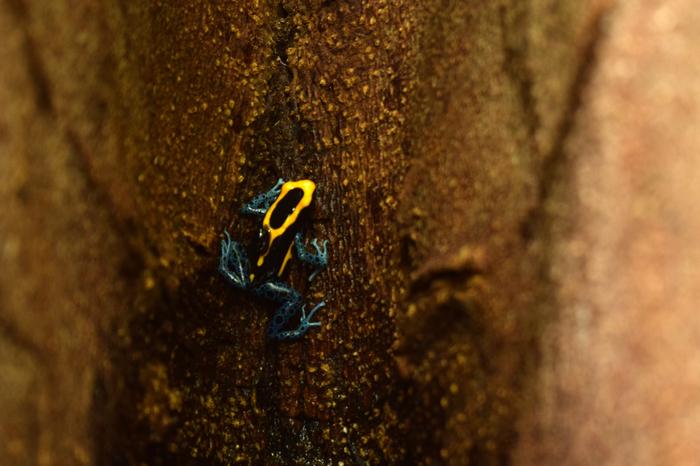Over thousands of years some animals have specialised to live in environments where the sun never shines: giant squid with eyes the size of volleyballs see even in the darkest depths while others, like cave-dwelling olms, have lost the functionality of their eyes completely. But for animals that do not live in these extremes, how do species manage a world that suddenly becomes dark? Lakes that become turbid from algal blooms, agricultural run-off, or other environmental pollutants represent common examples of environmental disturbances that can impact the visual scene that aquatic animals must navigate to survive.

Credit: University of Jyväskylä
Over thousands of years some animals have specialised to live in environments where the sun never shines: giant squid with eyes the size of volleyballs see even in the darkest depths while others, like cave-dwelling olms, have lost the functionality of their eyes completely. But for animals that do not live in these extremes, how do species manage a world that suddenly becomes dark? Lakes that become turbid from algal blooms, agricultural run-off, or other environmental pollutants represent common examples of environmental disturbances that can impact the visual scene that aquatic animals must navigate to survive.
Metamorphic animals provide a unique opportunity to explore the effects of environmental turbidity throughout development
Researchers from the University of Jyväskylä, Finland, turned to a peculiar species to explore the effects of long-lasting turbidity on animal behaviour: Neotropical poison frogs. While poison frogs may not be the first animal that comes to mind to understand the impact of disturbance on vision in aquatic animals, the unique life history of these frogs makes them the perfect candidates to study the effects of turbidity throughout development. Poison frog tadpoles grow in small pools of water formed by vegetation (such as a leaf axil of a bromeliad) that serve as nurseries where individuals are confined until metamorphosis.
– These small pools of water can readily serve as natural “simulations” of larger environments, such as lakes, as their small size makes them easy to measure and these pools vary significantly in their turbidity, explains Chloe Fouilloux from The Department of Biological and Environmental Science at the University of Jyväskylä.
Naturally, the water in pools can range from being as clear as drinking water to as dark as wine. As such, these environments can serve arenas to test how rearing conditions affect an animal’s response to risk.
Visibility makes a difference
Unexpectedly, the world within a leaf axil can be teeming with life from invertebrates to amphibian tadpoles. The goal of this multi-species comparison was to measure how turbidity affects an individual’s response to the visual cues of predators in novel conditions. Researchers found that poison frog tadpoles that develop in clear environments are able to visually discriminate between different types of predators and respond accordingly. In contrast, those that have developed in darker environments exhibit weaker responses to the visual cues of predators.
– The responses from tadpoles illustrate how predator-prey interactions may shift in dynamic light environments and have important implications for the visual plasticity of animals in response to environmental change, clarifies Bibiana Rojas, the project leader currently based at the Konrad Lorenz Institute of Ethology, Vienna.
Researchers believe their findings may serve as a useful model to understand animal responses to habitat disturbance and how communities may shift when visually-guided animals are challenged.
Journal
Journal of Experimental Biology
DOI
10.1242/jeb.245822
Method of Research
Experimental study
Subject of Research
Animals
Article Title
Visual environment of rearing sites affects larval response to perceived risk




